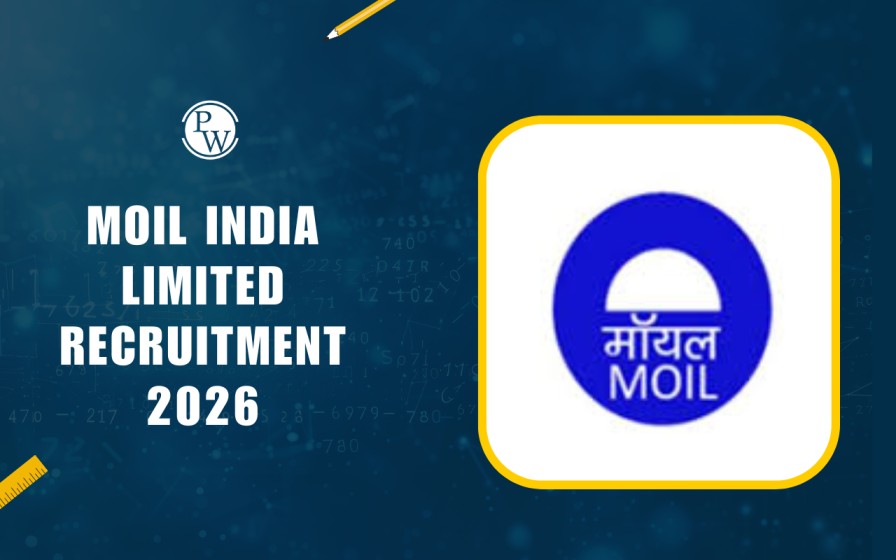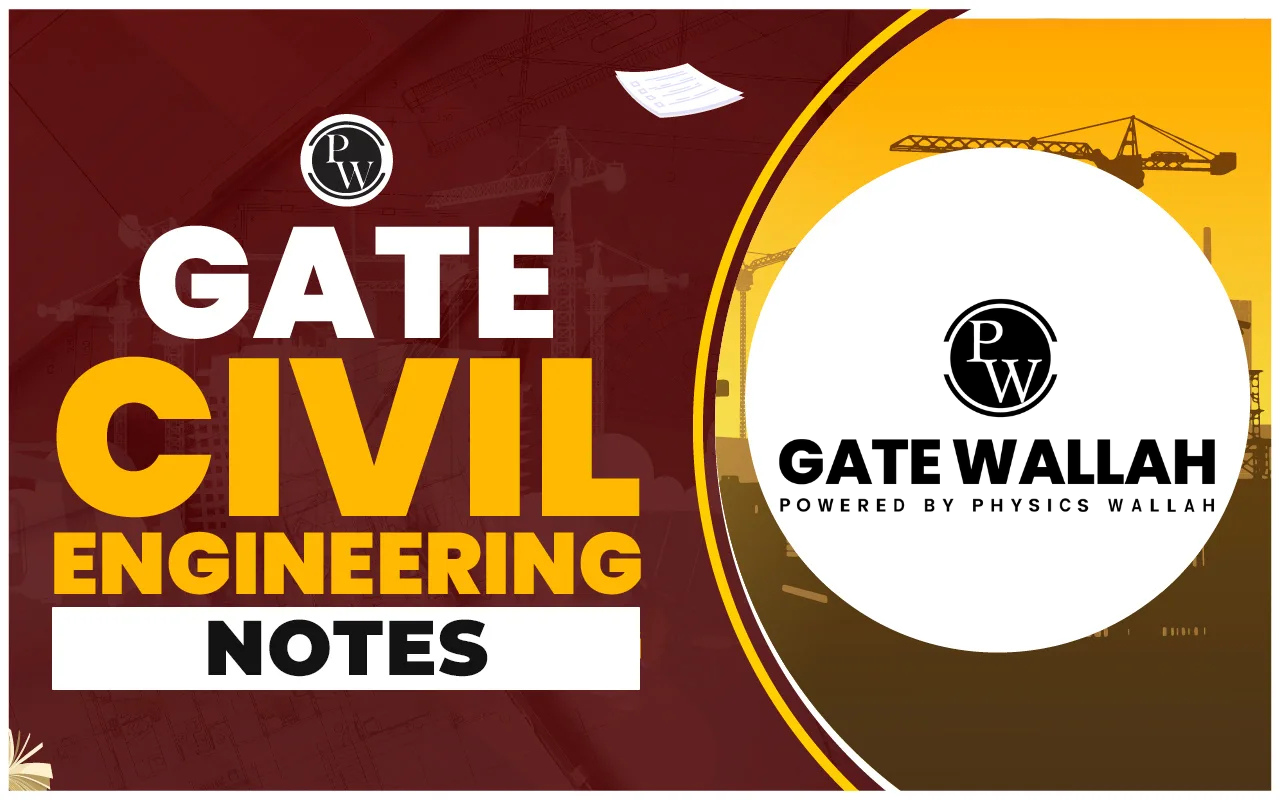
GATE Engineering Sciences Syllabus 2026: IIT Guwahati has been release the official syllabus for GATE Engineering Sciences paper @gate2026.iitg.ac.in. Candidates who are aiming to take the GATE 2026 examination in Engineering Sciences disciplines must have an in-depth knowledge of the syllabus to create a structured study plan.
The GATE Syllabus for Engineering Sciences is divided into 8 different sections to assess the candidate's knowledge in core subjects as well as general aptitude. Moreover, like other papers, the GATE Engineering Sciences Syllabus 2026 also includes common sections such as General Aptitude and Engineering Mathematics.
Check out the detailed GATE Engineering Sciences syllabus to know the key topics and subjects that aspirants should concentrate on during their exam preparation.
GATE Engineering Sciences Syllabus 2026
The GATE Engineering Sciences Syllabus 2026 PDF is now made available for download on the official website, gate2026.iitg.ac.in. Aspirants can download the entire GATE XE Syllabus PDF of the previous year to know the topics from which questions will arise. Furthermore, the GATE Engineering Sciences (XE) Syllabus 2026 covers eight sections with subject codes XE-A to XE-H. Engineering mathematics (XE-A), which is worth 15 marks, is going to be mandatory to attend.
However, for the remaining sections, aspirants will have the choice to select any two sections. The selected two sections of the GATE Engineering Sciences syllabus 2026 carry 35 marks each, which means 70 (2x35 = 70 marks) in total.
GATE Engineering Science Syllabus PDF
List of GATE Engineering Science (XE) Syllabus 2026 with Subject Codes
The GATE Engineering Sciences (XE) syllabus 2026 encompasses eight sections, which are mentioned below along with their subject codes. Aspirants attempting the GATE 2026 XE paper should ensure that they are thoroughly aware of the topics that fall under each section, as this will aid in making informed choices.
- GATE Engineering Mathematics (XE-A) Syllabus
- GATE Fluid Mechanics (XE-B) Syllabus
- GATE Materials Science (XE-C) Syllabus
- GATE Solid Mechanics (XE-D) Syllabus
- GATE Thermodynamics (XE-E) Syllabus
- GATE Polymer Science and Engineering (XE-F) Syllabus
- GATE Food Technology (XE-G) Syllabus
- GATE Atmospheric and Oceanic Sciences (XE-H) Syllabus
It is important to remember that in addition to the two sections listed above, aspirants have to attempt the general aptitude and engineering mathematics sections as well in the GATE XE paper. Let us go over each one in great detail.
GATE XE Syllabus for Engineering Mathematics (XE-A)
Another compulsory section of the GATE 2026 XE syllabus is Engineering Mathematics. It is worth 15 marks, with seven 1-point questions and four 2-point questions. This section is designed to examine aspirants' knowledge of various mathematical principles as well as their ability to use them to effectively solve engineering problems.
Check out the table with important topics and subtopics from the GATE 2026 XE syllabus for Engineering Mathematics (XE-A).
|
GATE XE Syllabus for Engineering Mathematics (XE-A) |
|
| Topics | Sub-topics |
| Linear Algebra | Algebra of real matrices: Determinant, inverse and rank of a matrix; System of linear equations; Eigenvalues and eigenvectors; Cayley-Hamilton Theorem |
| Calculus | Functions of a single variable: Limit, indeterminate forms, L’Hospital’s rule; Continuity and differentiability; Mean value theorems; Maxima and minima; Taylor’s theorem; Fundamental theorem and mean value theorem of integral calculus; Evaluation of definite and improper integrals; Applications of definite integrals to areas and volumes (rotation of a curve about an axis) |
| Functions | Functions of two variables: Limit, continuity and partial derivatives; Directional derivative; Total derivative; Maxima, minima and saddle points; Method of Lagrange multipliers; Double integrals and their applications |
| Sequence and Series | Sequences and series: Convergence of sequences and series; Tests of convergence of series with non-negative terms; Power series; Taylor’s series; Fourier Series of functions of period 2π |
| Vector Calculus | Gradient, divergence and curl; Line integrals and Green’s theorem |
| Complex Variables | Complex numbers, Argand plane and polar representation of complex numbers; De Moivre’s theorem; Analytic functions; Cauchy-Riemann equations |
| Ordinary Differential Equations | First-order equations (linear and nonlinear); Second-order linear differential equations with constant coefficients; Cauchy-Euler equation; Second-order linear differential equations with variable coefficients; Wronskian; Method of variation of parameters; Eigenvalue problem for second-order equations with constant coefficients; Power series solutions for ordinary points |
| Partial Differential Equations | Classification of second-order linear partial differential equations; Method of separation of variables: One-dimensional heat equation and two-dimensional Laplace equation |
| Probability and Statistics | Axioms of probability; Conditional probability; Bayes’ Theorem; Mean, variance and standard deviation of random variables; Binomial, Poisson and Normal distributions; Correlation and linear regression |
| Numerical Methods | Solution of systems of linear equations using LU decomposition, Gauss elimination method; Lagrange and Newton’s interpolations; Solution of polynomial and transcendental equations by Newton-Raphson method; Numerical integration by trapezoidal rule and Simpson’s rule; Numerical solutions of first-order differential equations by explicit Euler’s method |
GATE XE Syllabus for Fluid Mechanics (XE-B)
The fluid mechanics part of the GATE 2026 XE syllabus includes eight major topics, like Classification and Structure of Materials, Thermodynamics, Kinetics and Phase Transformations, Properties and Applications of Materials, Processing of Materials, and Degradation of Materials.
Further important fluid mechanics subtopics are outlined below in the table for aspirants ease of use.
|
XE-B GATE Engineering Sciences Syllabus |
|
| Topics | Sub-topics |
| Flow and Fluid Properties | Fluid Properties: Density, viscosity, surface tension, relationship between stress and strain-rate for Newtonian fluids; Classification of Flows: Viscous versus inviscid flows, incompressible versus compressible flows, internal versus external flows, steady versus unsteady flows, laminar versus turbulent flows, 1-D, 2-D and 3-D flows, Newtonian versus non-Newtonian fluid flows; Hydrostatics: Buoyancy, manometry, forces on submerged bodies and its stability |
| Kinematics of Fluid Motion | Eulerian and Lagrangian descriptions of fluid motion; Concept of local, convective and material derivatives; Streamline, streakline, pathline and timeline |
| Integral Analysis of a Control Volume | Reynolds Transport Theorem (RTT) for conservation of mass, linear and angular momentum |
| Differential Analysis | Differential equations of mass and momentum for incompressible flows; Inviscid flows – Euler equations and viscous flows – Navier-Stokes equations; Concept of fluid rotation, vorticity, stream function and circulation; Exact solutions of Navier-Stokes equations for Couette flow and Poiseuille flow, thin film flow |
| Dimensional Analysis | Concept of geometric, kinematic and dynamic similarity; Buckingham Pi theorem and its applications; Non-dimensional parameters and their physical significance – Reynolds number, Froude number and Mach number |
| Internal Flows | Fully developed pipe flow; Empirical relations for laminar and turbulent flows: friction factor, Darcy-Weisbach relation and Moody’s chart; Major and minor losses |
| Bernoulli’s Equation and its Applications, Potential Flows | Bernoulli’s equation: Assumptions and applications; Flow measurements – Venturi meter, Pitot-static tube and orifice meter; Elementary potential flows: Velocity potential function; Uniform flow, source, sink and vortex, and their superposition for flow past simple geometries |
| External Flows | Prandtl boundary layer equations: concepts and assumptions; Boundary layer characteristics: Boundary layer thickness, displacement thickness and momentum thickness; Qualitative idea of boundary layer separation, streamlined and bluff bodies, and drag and lift forces |
GATE XE Syllabus for Materials Science (XE-C)
The GATE XE syllabus 2026 for Materials Sciences consists of six main topics, namely, Classification and Structure of Materials, Thermodynamics, Kinetics, and Phase Transformations, Processing of Materials, and Degradation of Materials, as explained in the table below.
|
XE-C GATE Engineering Sciences Syllabus |
|
| Topics | Sub-topics |
| Classification and Structure of Materials | Classification of materials: metals, ceramics, polymers, and composites; Nature of bonding in materials: metallic, ionic, covalent, and mixed bonding; Structure of materials: fundamentals of crystallography, symmetry operations, crystal systems, Bravais lattices, unit cells, crystallographic planes and directions; Defects in crystalline materials: vacancies, interstitials, solid solutions, dislocations, grain boundaries, twins, stacking faults, surfaces, and interfaces |
| Thermodynamics, Kinetics and Phase Transformations | Extensive and intensive thermodynamic properties, laws of thermodynamics, phase equilibria, phase rule, phase diagrams (unary and binary), basic electrochemistry; Reaction kinetics, fundamentals of diffusion, Fick’s laws, their solutions and applications; Solidification of pure metals and alloys, nucleation and growth, diffusional solid-state phase transformations, martensitic transformation |
| Properties and Applications of Materials | Mechanical properties of metals, ceramics, polymers, and composites at room temperature, stress-strain response (elastic, anelastic, and plastic deformation); Electronic properties: free electron theory, Fermi energy, density of states, elements of band theory, semiconductors, Hall effect, dielectric behavior, piezo- and ferroelectric behavior; Magnetic properties: Origin of magnetism in materials, para-, dia-, ferro-, and ferrimagnetism |
| Characterization and Measurements of Properties | X-ray diffraction, spectroscopic techniques such as UV-Vis, IR and Raman, optical microscopy, electron microscopy, and composition analysis in electron microscopes; Tensile test, hardness measurement; Electrical conductivity, carrier mobility and concentrations; Thermal analysis techniques: thermogravimetry and calorimetry |
| Processing of Materials | Heat treatment of ferrous and aluminum alloys, preparation of ceramic powders, sintering; thin film deposition: evaporation and sputtering techniques; chemical vapor deposition, thin film growth phenomena |
| Degradation of Materials | Corrosion and its prevention, embrittlement of metals, polymer degradation |
GATE XE Syllabus for Solid Mechanics (XE-D)
The GATE 2026 XE syllabus for Solid Mechanics (XE-D) covers a wide range of subjects associated with solid mechanics. The following topics are included in the XE-D GATE Engineering Sciences Syllabus 2026:
|
XE-D GATE Engineering Sciences Syllabus |
|
| Topics | Sub-topics |
| Mechanics of rigid bodies | Equivalent force systems; free-body diagrams; equilibrium equations; analysis of determinate trusses and frames; friction; principle of minimum potential energy; particle kinematics and dynamics; dynamics of rigid bodies under planar motion; law of conservation of energy; law of conservation of momentum. |
| Mechanics of deformable bodies | Stresses and strains; transformation of stresses and strains, principal stresses and strains; Mohr’s circle for plane stress and plane strain; generalized Hooke’s Law; elastic constants; thermal stresses; theories of failure. <br> Axial force, shear force, and bending moment diagrams; axial, shear, and bending stresses; combined stresses; deflection (for symmetric bending); torsion in circular shafts; thin-walled pressure vessels; energy methods (Castigliano’s Theorems); Euler buckling. |
| Vibrations | Free vibration of undamped single degree of freedom systems |
GATE Engineering Sciences Syllabus for Thermodynamics (XE-E)
The GATE Engineering Sciences syllabus for the Thermodynamics part is divided into seven sections. Among the key topics are basic principles, the First Law of Thermodynamics, thermodynamic cycles, and ideal gas mixtures, among others as outlined below.
|
XE-E GATE Engineering Sciences Syllabus |
|
| Topics | Sub-topics |
| Basic Concepts | Continuum and macroscopic approach; thermodynamic systems (closed and open); thermodynamic properties and equilibrium; state of a system, state postulate for simple compressible substances, state diagrams, paths and processes on state diagrams; concepts of heat and work, different modes of work; zeroth law of thermodynamics; concept of temperature. |
| First Law of Thermodynamics | Concept of energy and various forms of energy; internal energy, enthalpy; specific heats; first law applied to elementary processes, closed systems and control volumes, steady and unsteady flow analysis. |
| Second Law of Thermodynamics | Limitations of the first law of thermodynamics, concepts of heat engines and heat pumps/refrigerators, Kelvin-Planck and Clausius statements and their equivalence; reversible and irreversible processes; Carnot cycle and Carnot principles/theorems; thermodynamic temperature scale; Clausius inequality and concept of entropy; microscopic interpretation of entropy, the principle of increasing entropy; T-s diagrams; second law analysis of control volume; availability and irreversibility; third law of thermodynamics. |
| Properties of Pure Substances | Thermodynamic properties of pure substances in solid, liquid, and vapor phases; P-v-T behavior of simple compressible substances, phase rule, thermodynamic property tables and charts, ideal and real gases; ideal gas equation of state; van der Waals equation of state; law of corresponding states, compressibility factor; and generalized compressibility chart |
| Thermodynamic Relations | T-ds relations, Helmholtz and Gibbs functions, Gibbs relations, Maxwell relations, Joule-Thomson coefficient, coefficient of volume expansion, adiabatic and isothermal compressibilities, Clapeyron and Clapeyron-Clausius equations. |
| Thermodynamic Cycles | Carnot vapor cycle, ideal Rankine cycle, Rankine reheat cycle, air-standard Otto cycle, air-standard Diesel cycle, air-standard Brayton cycle, vapor-compression refrigeration cycle |
| Ideal Gas Mixtures | Dalton’s and Amagat’s laws, properties of ideal gas mixtures, air-water vapor mixtures, and simple thermodynamic processes involving them; specific and relative humidities, dew point and wet bulb temperatures, adiabatic saturation temperatures; psychrometric chart |
GATE Polymer Science and Engineering (XE-F) Syllabus
The Polymer Science and Engineering section of the GATE Engineering Sciences syllabus aims to provide a comprehensive understanding of polymer science and engineering principles, covering topics such as polymer synthesis, etc.
For the complete GATE Polymer Science and Engineering (XE-F) syllabus, refer to the table outlined below to find important topics.
|
XE-F GATE Engineering Sciences Syllabus |
|
| Topics | Sub-topics |
| Chemistry of high polymers | Monomers, functionality, degree of polymerizations, classification of polymers, glass transition, melting transition, criteria for rubberiness, polymerization methods: addition and condensation, kinetics, metallocene polymers and other newer methods of polymerization, copolymerization, monomer reactivity ratios and its significance, different copolymers: random, alternating, azeotropic copolymerization, block and graft copolymers, techniques for polymerization: bulk, solution, suspension, emulsion, concept of intermolecular order (morphology): amorphous, crystalline, orientation states, factors affecting crystallinity, crystalline transition, and effect of morphology on polymer properties |
| Polymer Characterization | Solubility and swelling, the concept of molecular weight distribution and its significance, average molecular weight determination, polymer crystallinity, analysis of polymers using IR, XRD, thermal (DSC, DMTA, TGA), microscopic techniques, molecular weight distribution: Broad and Narrow, GPC, and Mooney viscosity |
| Synthesis, manufacturing and properties | Commodity and general-purpose thermoplastics, engineering plastics, thermosetting polymers, natural and synthetic rubbers, speciality plastics, and biopolymers |
| Polymer blends and composites | Difference between blends and composites, blend miscibility: miscible and immiscible blends, thermodynamics, phase morphology, polymer alloys, polymer eutectics, plastic-plastic, rubber-plastic, and rubber-rubber blends, FRP, particulate, long and short fiber reinforced composites, polymer reinforcement: natural and synthetic reinforcing fibers, ingredients/recipes for reinforced polymer composites |
| Polymer Technology | Polymer compounding, compounding ingredients for rubber and plastics, use of carbon black, polymer mixing equipment, cross-linking and vulcanization, vulcanization kinetics |
| Polymer rheology | Flow of Newtonian and non-Newtonian fluids, different flow equations, shear modulus dependence on temperature, molecular/segmental deformations, measurements of rheological parameters, visco-elasticity: creep and stress relaxations, mechanical models, control of rheological characteristics through compounding, rubber curing |
| Polymer processing | Compression molding, transfer molding, injection molding, blow molding, reaction injection molding, filament winding, SMC, BMC, DMC, extrusion, pultrusion, calendaring, rotational molding, thermoforming, powder coating, rubber processing |
| Polymer testing | Mechanical testing, conductivity testing, thermal testing, dielectric testing, swelling and aging resistance, environmental stress cracking resistance, limiting oxygen index, heat deflection temperature, brittleness temperature, glass transition temperature, coefficient of thermal expansion, shrinkage, flammability, optical properties, melt flow index |
| Polymer Recycling and Waste management | Polymer waste and its impact on the environment, sources of polymer waste, identification and separation techniques, recycling classification, recycling of thermoplastics, thermosets, and rubbers, applications of recycled materials, life cycle assessment of polymer products |
GATE Engineering Sciences Syllabus for Food Technology
The GATE 2026 XE syllabus for Food Technology (XE-G) focuses on various topics related to food chemistry, food microbiology, food product technology, food engineering, and other relevant areas. Find out more important topics in the table below.
|
XE-G GATE Engineering Sciences Syllabus |
|
| Topics | Sub-topics |
| Food Chemistry and Nutrition | Carbohydrates: structure and functional properties of mono-, oligo-, & poly-saccharides including starch, cellulose, pectic substances, and dietary fiber, gelatinization and retrogradation of starch; Proteins: classification and structure of proteins in food, biochemical changes in post-mortem and tenderization of muscles; Lipids: classification and structure of lipids, rancidity, polymerization, and polymorphism; Pigments: carotenoids, chlorophylls, anthocyanins, tannins, and myoglobin; Food flavors: terpenes, esters, aldehydes, ketones, and quinones; Enzymes: specificity, simple and inhibition kinetics, coenzymes, enzymatic and non-enzymatic browning; Nutrition: balanced diet, essential amino acids and essential fatty acids, protein efficiency ratio, water-soluble and fat-soluble vitamins, role of minerals in nutrition, co-factors, anti-nutrients, nutraceuticals, nutrient deficiency diseases; Chemical and biochemical changes: changes occur in foods during different processing |
| Food Microbiology | Characteristics of microorganisms: morphology of bacteria, yeast, mold, and actinomycetes, spores and vegetative cells, gram-staining; Microbial growth: growth and death kinetics, serial dilution technique; Food spoilage: spoilage microorganisms in different food products, including milk, fish, meat, eggs, cereals, and their products; Toxins from microbes: pathogens and non-pathogens including Staphylococcus, Salmonella, Shigella, Escherichia coli, Bacillus, Clostridium, and Aspergillus genera; Fermented foods and beverages: curd, yogurt, cheese, pickles, soy sauce, sauerkraut, idli, dosa, vinegar, alcoholic beverages, and sausage. |
| Food Products Technology | Processing principles: thermal processing, chilling, freezing, dehydration, addition of preservatives and food additives, irradiation, fermentation, hurdle technology, intermediate moisture foods; Food packaging and storage: packaging materials, aseptic packaging, controlled and modified atmosphere storage; Cereal processing and products: milling of rice, wheat, and maize, parboiling of paddy, bread, biscuits, extruded products, and ready-to-eat breakfast cereals; Oil processing: expelling, solvent extraction, refining, and hydrogenation; Fruits and vegetables processing: extraction, clarification, concentration, and packaging of fruit juice, jam, jelly, marmalade, squash, candies, tomato sauce, ketchup, puree, potato chips, and pickles; Plantation crop processing and products: tea, coffee, cocoa, spice, extraction of essential oils and oleoresins from spices; Milk and milk products processing: pasteurization and sterilization, cream, butter, ghee, ice-cream, cheese, and milk powder; Processing of animal products: drying, canning, and freezing of fish and meat, production of egg powder; Waste utilization: pectin from fruit wastes, uses of by-products from rice milling; Food standards and quality maintenance: FPO, PFA, A-Mark, ISI, HACCP, food plant sanitation, and cleaning in place (CIP). |
| Food Engineering | Mass and energy balance, Momentum transfer: Flow rate and pressure drop relationships for Newtonian fluids flowing through pipes; Reynolds number; Heat transfer: heat transfer by conduction, convection, radiation, and heat exchangers; Mass transfer: molecular diffusion and Flick’s law, conduction and convective mass transfer, permeability through single and multilayer films; Mechanical operations: size reduction of solids, high-pressure homogenization, filtration, centrifugation, settling, sieving, mixing & agitation of liquids; Thermal operations: thermal sterilization, evaporation of liquid foods, hot air drying of solids, spray and freeze-drying, freezing and crystallization; Mass transfer operations: psychometric, humidification, and dehumidification operations |
GATE Atmospheric and Oceanic Sciences (XE-H) Syllabus
The GATE 2026 Atmospheric and Oceanic Sciences (XE-H) syllabus focuses on atmospheric and oceanic sciences, including atmospheric dynamics, thermodynamics, radiation, weather and climate, oceanography, and other topics as outlined below.
|
XE-H GATE Engineering Sciences Syllabus |
|
| Topics | Sub-topics |
| Atmospheric Science | Vertical Structure and Composition of the Atmosphere, Blackbody Radiation and Radiation Balance, Modes of Heat Transfer in the Atmosphere, Greenhouse Effect, Cloud Types, Laws of Thermodynamics, Gas Laws, Hydrostatic Equation, Clausius Clapeyron Equation, Adiabatic Processes, Humidity in the Atmosphere, Atmospheric Stability, Weather, and Climate |
| Navier-Stokes and Continuity Equations, Compressible and Incompressible Fluids, Pressure Gradient, Centripetal, Centrifugal and Coriolis Forces, Geostrophic, Gradient, and Cyclostrophic Balances, Circulations and Vorticity, General Circulation of the Atmosphere, Broad Features of Indian Monsoons, Monsoon Depressions, Tropical Convergence Zones, and Tropical Cyclones | |
| Ocean Sciences | Vertical Profiles of Temperature and Salinity, Stability and Double Diffusion, Equation of State, Equations for Conservation of Mass, Momentum, Heat and Salt, Inertial Currents, Geostrophic Motion, Air-Sea Surface Fluxes, Wind-driven Circulation, Ekman and Sverdrup Transports, Storm Surges, Tides, Tsunamis, and Wind Waves, Eddies and Gyres, Eastern and Western Boundary Currents, Equatorial Currents, Indian Ocean Current Systems, and Thermohaline Circulation |
| Chemical Properties of Seawater, Major and Minor Elements, Ocean Acidification, Biogeochemical Cycling of Nutrients, Trace Metals, and Organic Matter, Biological Pump, Primary and Secondary Biological Productivity, Air-Sea Exchange of Biogenic Dissolved Gases, Marine Ecology | |
GATE XE Syllabus 2026 - Important Topics
While the complete XE syllabus is essential to read, aspirants are advised to prioritize the following important topics from the GATE Engineering Sciences syllabus 2026, as they may carry high weightage:
- Engineering Mathematics
- Differential Analysis
- Polymer Technology and Polymer Rheology
- Characterization and Measurements of Properties
- Polymer processing, Polymer testing
- Properties of Pure Substances
- The First Law of Thermodynamics
- Mechanics of rigid bodies
- Vibrations
- Flow measurements
Elevate your GATE readiness with Physics Wallah’s GATE Online Courses . PW GATE Online Coaching offers comprehensive live sessions tailored to the syllabus, invaluable study materials, practice tests, and much more.
GATE Engineering Sciences Syllabus 2026 FAQs
Q. Which section of the GATE XE syllabus carries the highest weightage?
Q. What is the GATE Engineering Sciences (XE) syllabus?
Q. Who will release the GATE Engineering Sciences syllabus 2026?
Q. From where can I find the GATE Engineering Sciences syllabus 2026 PDF?










